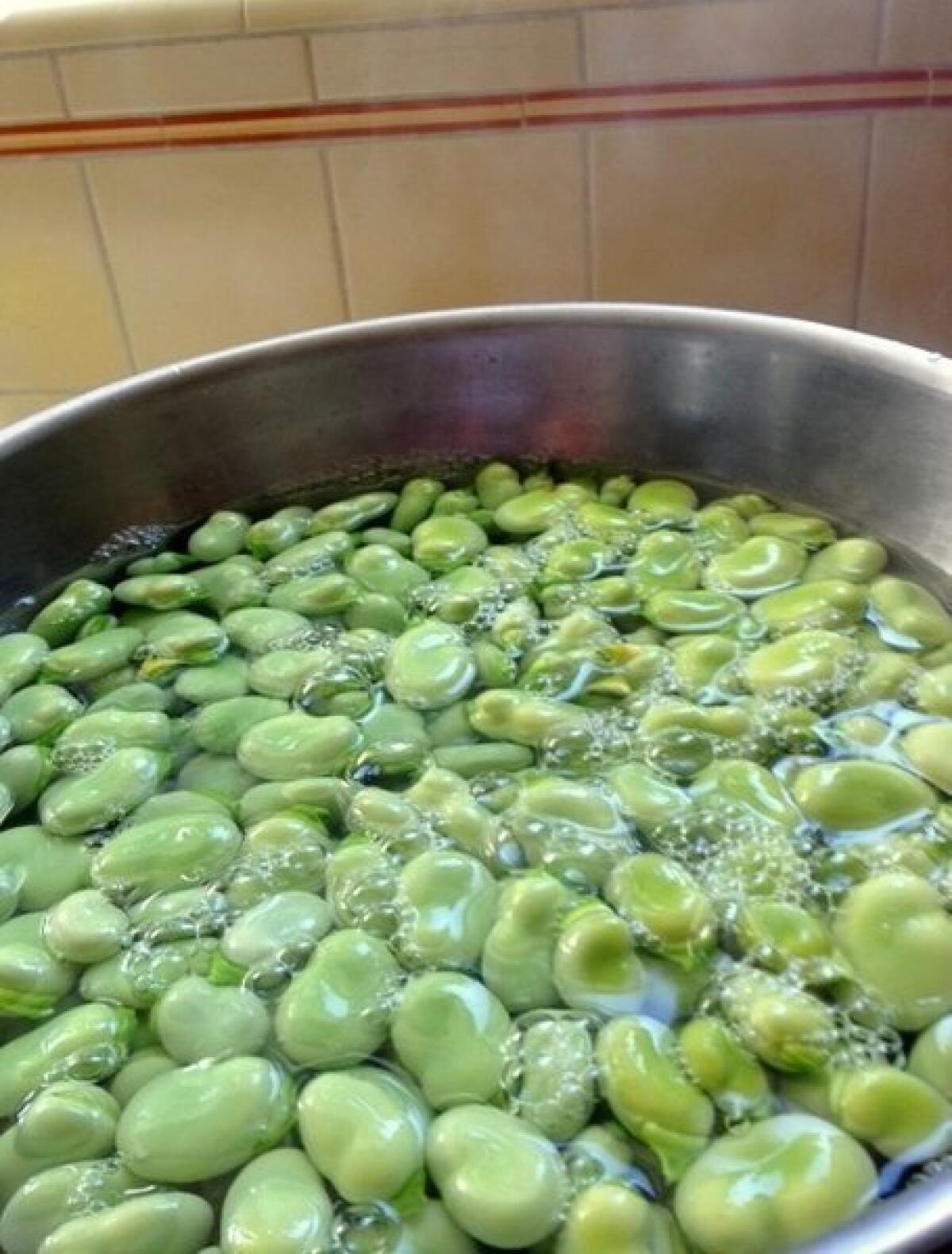The incredible shrinking fava bean

- Share via
Fava beans are my kind of vegetable to grow – you put the seeds in the ground and, with hardly any further effort, wind up with a forest of plants (I grew these this year). But then, of course, you have to peel them. Every rose has its thorn.
My fava patch had gotten wildly out of control over the last couple of weeks, so Sunday I decided to thin it out, harvesting the fully mature beans. What I thought would be a five-minute exercise ended up taking much longer, and I wound up with almost 8 pounds of pods.
When favas are young and the pods are thin, they are easier to prepare. You can even cook them whole. But when they get to this size, I like to peel them (even though, it turns out, some very good cooks disagree).
Prepping favas is a multi-step operation, and for the uninitiated, the results can be shocking. What starts out as a mountain of beans reduces very, very quickly.
I go through this every spring, so it’s no surprise to me, though I still am always a bit taken aback by the magnitude. Sunday I decided to document just how involved the process was.
The first step was shucking the pods. It took about 30 minutes to get through the 8 pounds. After shucking, you’re left with the beans, covered in a tough white skin (if they’re young and you can still see green, you can stop there).
The way I learned to peel this second skin most effectively is to collect the beans in a bowl and pour over boiling water to cover. By the time the water is cool enough that you can put your hand in, the skins will have swollen and softened so you can just nick one end with your thumbnail and squeeze out the twin bean halves inside. I picked up this technique from Paula Wolfert years ago and still find it the easiest way.
You can easily see this becoming a kind of communal exercise, like making tamales. Many hands make light work and all of that. With my wife and I both peeling, it took about 25 minutes to get through all of the beans.
When we were done, those 8 pounds of favas — enough to fill a grocery bag — had turned into 3 cups of usable beans. Incredible shrinking favas, indeed.
Still, they are so delicious. I rendered some thinly sliced bacon in butter, softened some shallots, reduced some white wine to a syrup with a few sprigs of fresh thyme and then added a bit of cream and cooked until it had just thickened. Then I added the shelled, peeled favas and warmed them until they were heated through.
I’m not going to say this is my favorite feast of spring, because Zuckerman’s had its fat asparagus at the farmers market, and there’s just no arguing with that.
But it did make a really remarkable dinner, served with some simply broiled local white seabass that I picked up from my longtime farmers market purveyor Pete Siracusa of J&P; West Coast Seafood.
Afterward, though, things got kind of interesting. Being a modern kind of guy, I tweeted and Facebooked a photo of the beans ready to be peeled. First, chef Gary Menes (called “the vegetable whisperer” for his food at the pop-up Le Comptoir) suggested that I’d get better color and flavor from the favas if I peeled them without blanching them first. I replied that I was sure he was right and that I would gladly accept the help of his kitchen staff the next time I was going to serve them.
Over on Facebook, another kind of discussion started. Three really good Italian cooks — Judy Witts Francini, Silvestro Silvestori and Nancy Harmon Jenkins — took me to task for doing the second peeling at all.
I find that when the skins are that thick, they are noticeably bitter. Yes, they agreed, that might be true, but Italians appreciate bitterness more than Americans seem to.
And then they fell into an argument among themselves about different fava bean recipes.
ALSO:
More to Read
Eat your way across L.A.
Get our weekly Tasting Notes newsletter for reviews, news and more.
You may occasionally receive promotional content from the Los Angeles Times.








